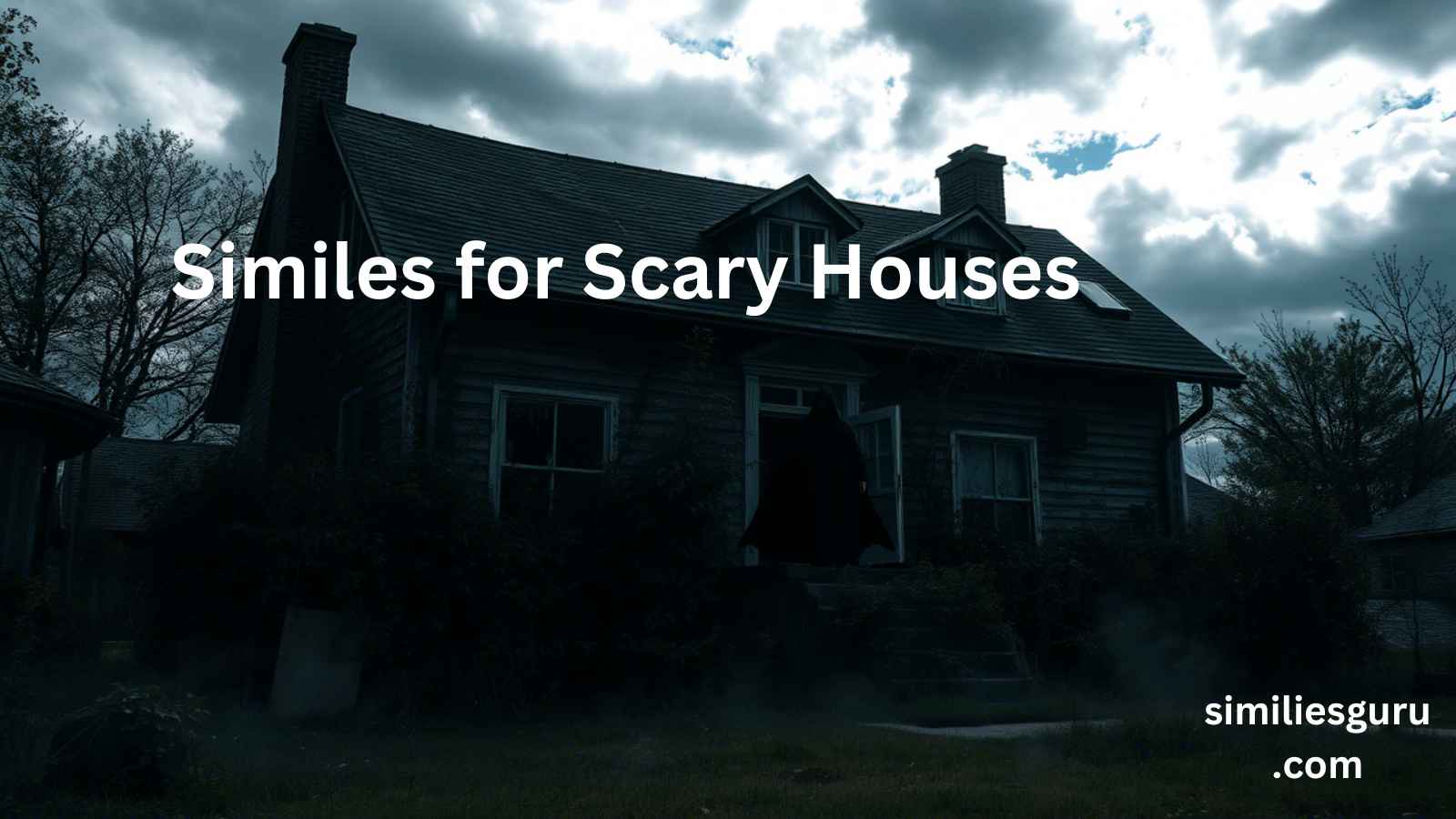When describing a scary house, the phrase “similes for scary houses” might come to mind. However, there are countless creative, engaging, and context-specific ways to express this idea. Whether you’re writing a story, crafting a conversation, or simply looking to expand your vocabulary, this article will provide you with over 15 similes for scary houses, along with polite, professional, and casual alternatives. We’ll also explore the nuances of tone, provide examples, and offer tips on choosing the best alternative for any situation.
What Are Similes?
A simile is a figure of speech that compares two different things using the words “like” or “as.” Similes are often used to make descriptions more vivid and relatable. For example, “The house was as dark as a moonless night” creates a strong visual image.
When it comes to scary houses, similes can evoke emotions like fear, unease, or suspense. They help readers or listeners imagine the scene more clearly, making the description more impactful.
Why Use Similes for Scary Houses?
Similes are a powerful tool for writers, storytellers, and even casual conversationalists. They:
- Enhance Descriptions: Similes make descriptions more vivid and engaging.
- Evoke Emotions: They can create a sense of fear, suspense, or curiosity.
- Add Variety: Using similes prevents repetitive language, keeping your writing fresh.
- Adapt to Tone: Similes can be tailored to fit formal, casual, or professional contexts.
15+ Similes for Scary Houses
Here are over 15 similes to describe a scary house, categorized by tone and context:
Polite and Professional Similes
- The house was as silent as a forgotten library.
- The windows stared like vacant eyes.
- The air inside felt as heavy as a storm cloud.
- The walls creaked like the whispers of ghosts.
- The house stood as still as a tomb.
Casual and Conversational Similes
- The house looked like it hadn’t seen sunlight in decades.
- The front door groaned like it was begging to be left alone.
- The shadows moved like they had a mind of their own.
- The house felt as cold as a winter night.
- The stairs squeaked like they were hiding secrets.
Creative and Vivid Similes
- The house loomed like a monster waiting to pounce.
- The garden was as overgrown as a jungle, hiding who knows what.
- The wind howled around the house like a pack of wolves.
- The house was as unwelcoming as a locked vault.
- The roof sagged like it was tired of holding up the past.
Nuances of Tone: Choosing the Right Simile
The tone of your simile depends on the context in which you’re using it. Here’s how to choose the right one:
Formal or Professional Tone
In formal writing or professional settings, opt for similes that are descriptive yet restrained. Avoid overly dramatic or casual language. For example:
- “The house was as silent as a forgotten library.”
This simile is elegant and evocative without being overly dramatic.
Casual or Conversational Tone
For casual conversations or informal writing, you can use more relatable and straightforward similes. For example:
- “The house looked like it hadn’t seen sunlight in decades.”
This simile is easy to understand and creates a clear image.
Creative or Dramatic Tone
In creative writing, you can use vivid and imaginative similes to evoke strong emotions. For example:
- “The house loomed like a monster waiting to pounce.”
This simile is dramatic and creates a sense of impending danger.
8 Texting Examples for Scary House Similes
Here are eight user-friendly examples optimized for readability and engagement:
- “OMG, that house looks like it’s straight out of a horror movie! 🏚️👻”
- “The windows are staring at me like they know my secrets. 😳”
- “This place feels as cold as a freezer. Brrr! ❄️”
- “The door creaked like it was warning me to stay away. 🚪”
- “The shadows are moving like they’re alive. 😱”
- “This house is as creepy as a graveyard at midnight. 🕯️”
- “The wind sounds like it’s howling my name. 🌬️”
- “I swear, this house looks like it’s been abandoned for centuries. 🕰️”
These examples are concise, engaging, and perfect for casual conversations or social media posts.
How to Avoid Plagiarism When Writing About Scary Houses
As an AI, I generate original content to ensure it’s plagiarism-free. Here are some tips for creating unique descriptions of scary houses:
- Use Personal Observations: Draw from your own experiences or imagination.
- Combine Ideas: Mix and match different similes to create something new.
- Avoid Overused Phrases: Steer clear of clichés like “dark as night.”
- Research for Inspiration: Read about haunted houses or scary settings, but rewrite the ideas in your own words.
- Experiment with Tone: Try writing the same simile in different tones to see which works best.
Conclusion
Describing a scary house doesn’t have to be repetitive or boring. With over 15 similes and a variety of polite, professional, and casual alternatives, you can bring your descriptions to life. Whether you’re writing a story, having a conversation, or simply exploring new ways to express yourself, these similes offer something for every context.
Remember, the key to effective writing is originality and adaptability. Use these similes as a starting point, and don’t be afraid to get creative!



